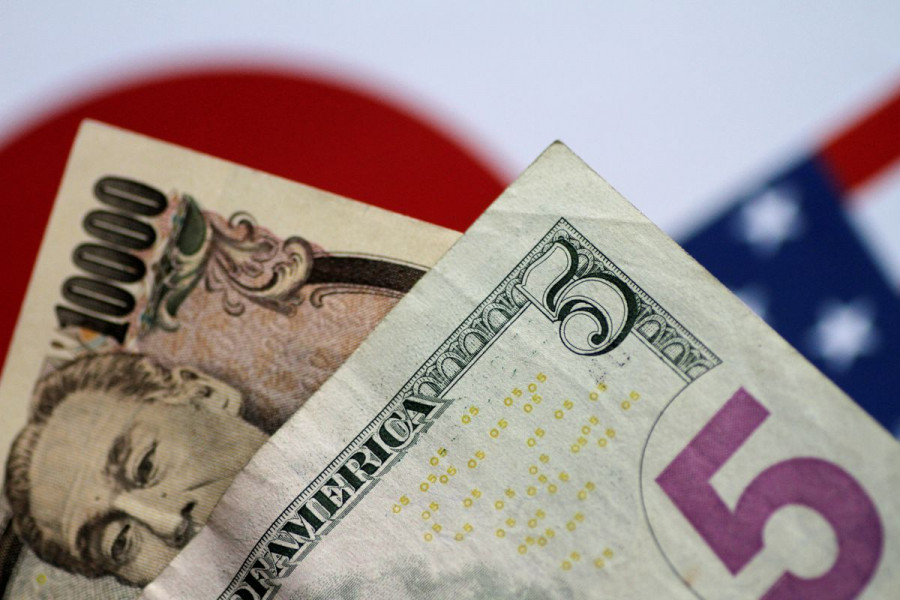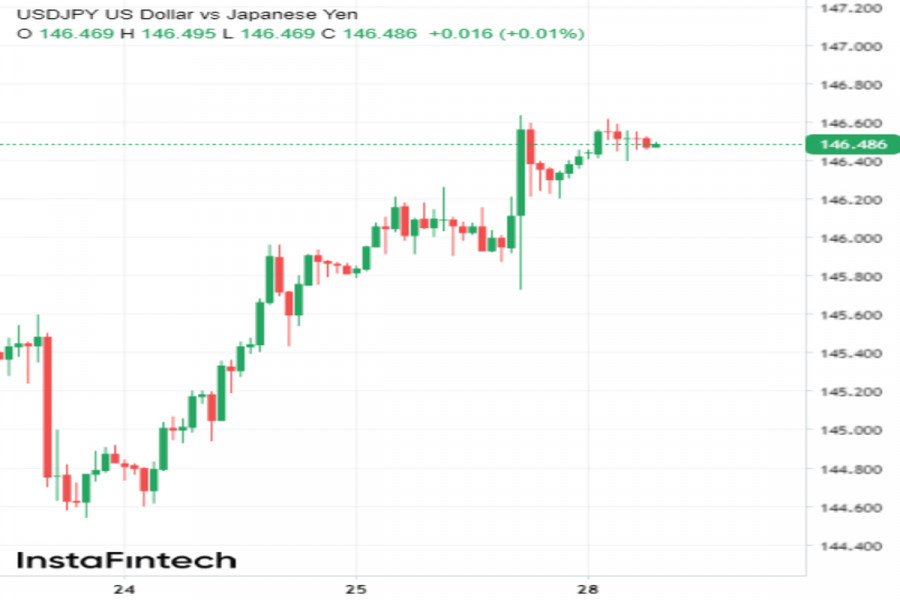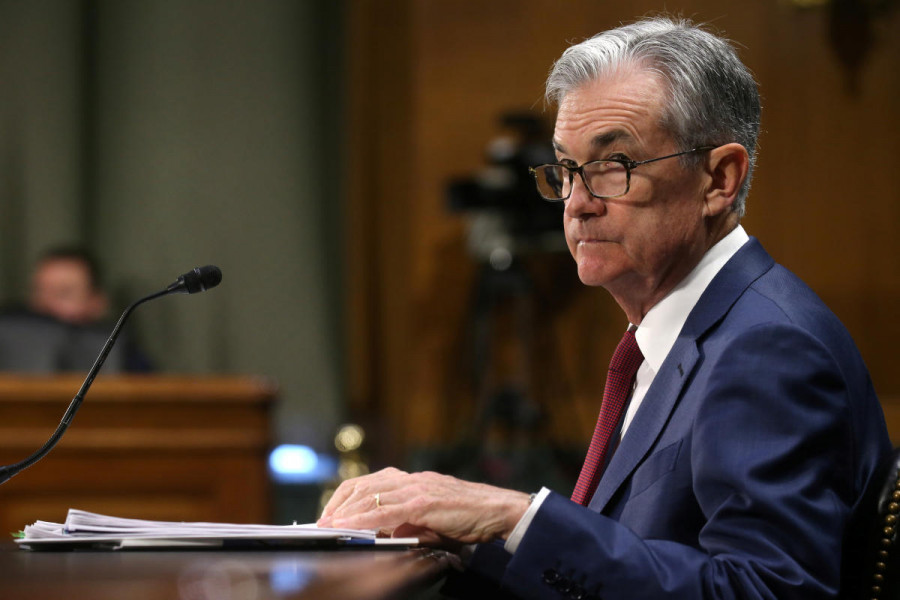

At the start of the new week, USD/JPY is trading firmly near 146.6, its highest level since November 2022 which was reached last Friday. The rally is driven by traders' concerns regarding the further monetary divergence between the United States and Japan, a concern that heightened noticeably after the economic symposium in Jackson Hole. What did Jerome Powell and Kazuo Ueda say?
Powell confirmes further rate hikesLast Friday, the US dollar rose against the yen by almost 0.4%, reaching the highest level since November 2022, at 146.634. The catalyst for this surge was the hawkish speech by the Fed Chair at the economic forum in Jackson Hole.

During his speech, Jerome Powell highlighted both the progress the regulator has made in alleviating price pressures and the ongoing risks to the American economy. In light of this, he pledged to proceed with caution in the upcoming FOMC meetings but left the door open for further interest rate hikes.
The head of the US central bank emphasized that the Federal Reserve's priority remains lowering inflation to 2%, hinting that sustained price growth might require additional actions from the regulator.

Following the statement, futures traders adjusted their forecasts to include another round of tightening in the United States this year.
Most investors still anticipate that the Federal Reserve will leave interest rates unchanged in September, but the likelihood of an increase in November rose to 48% after Jackson Hole. For comparison, it was only 33% the week before.
Rising hawkish sentiment in the market led to a rise in the yield of 10-year US Treasury bonds, which currently stands at 4.25%.
A sharp jump in US bond yields provided substantial support for the greenback across the board, but the primary beneficiary in this situation was the USD/JPY pair.
At the end of the past week, USD appreciated by 0.7% against the yen, posting a monthly gain of 2%.
Ueda sees no need to change policyOn Monday morning, the USD/JPY pair shifted towards a downward correction, yet still remains significantly above the key level of 146.
The pair gains support not only from the hawkish speech of the Federal Reserve Chair but also from the dovish rhetoric of his Japanese counterpart.
The head of the Bank of Japan (BOJ) spoke at the Jackson Hole symposium last Saturday. Kazuo Ueda refrained from commenting on the recent yen's depreciation yen against the dollar. Instead, he focused on the price growth dynamics in Japan.
"We see that core inflation is still slightly below our target of 2%. That is why the Bank of Japan continues to adhere to the current monetary policy course, which involves ultra-low interest rates," the official noted.
In July, Japan's core consumer inflation, which excludes fresh food costs, grew at the slowest pace in 4 months, reaching 3.1%.
According to Ueda, inflation could ease even more in the near future, ultimately leading to a noticeable decrease in the core CPI by the end of the year.
In the context of such a forecast, we can assume that the BOJ intends to maintain its current ultra-accommodative policy over the next several months.
If the regulator continues to pursue a dovish strategy, this will exert more pressure on the yen against the American currency.
Outlook for USD/JPYThe current fundamental backdrop, which still points to a strong divergence in the monetary policies of the Federal Reserve and the Bank of Japan, indicates that USD/JPY is set to rise further.
According to forecasts, the currency pair will likely continue moving upwards in the medium term. However, its ascent may be limited by concerns about potential currency intervention from Tokyo.
Experts do not rule out the possibility that the risk of currency intervention could trigger a downward correction that could last for several days. Yet, considering the forecasts regarding the future policies of the Fed and the BOJ, it makes sense to view this temporary pullback as an excellent opportunity to buy the USD/JPY pair.
Regarding the short-term dynamics, over the next couple of days, the US dollar is likely to remain influenced by the 10-year Treasury yield as there are no significant data releases anticipated.
An empty economic calendar could also limit the pace of the USD/JPY pair in anticipation of this week's key event — the Friday release of US employment data.
If the NFP report proves to be strong, it would further reinforce the market's hawkish expectations regarding the future course of the Federal Reserve. In such a case, by the end of the week, the dollar could exhibit strong upward momentum across the board, including against the yen.